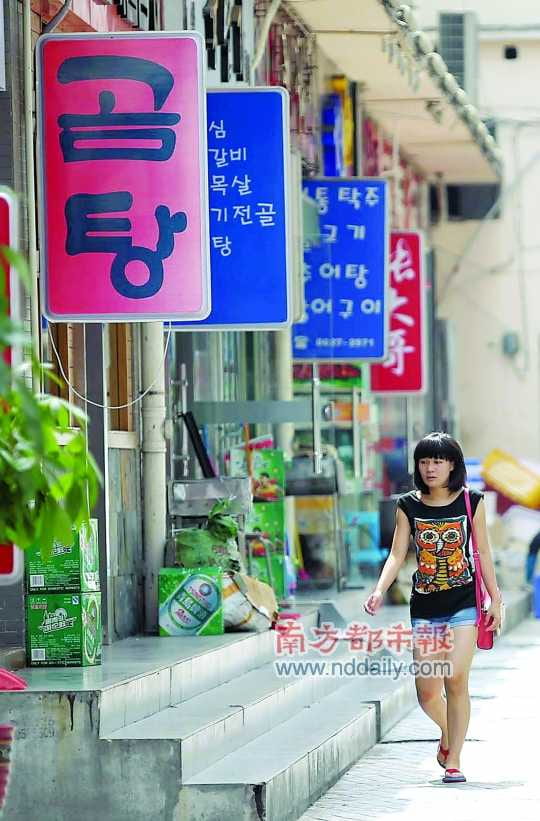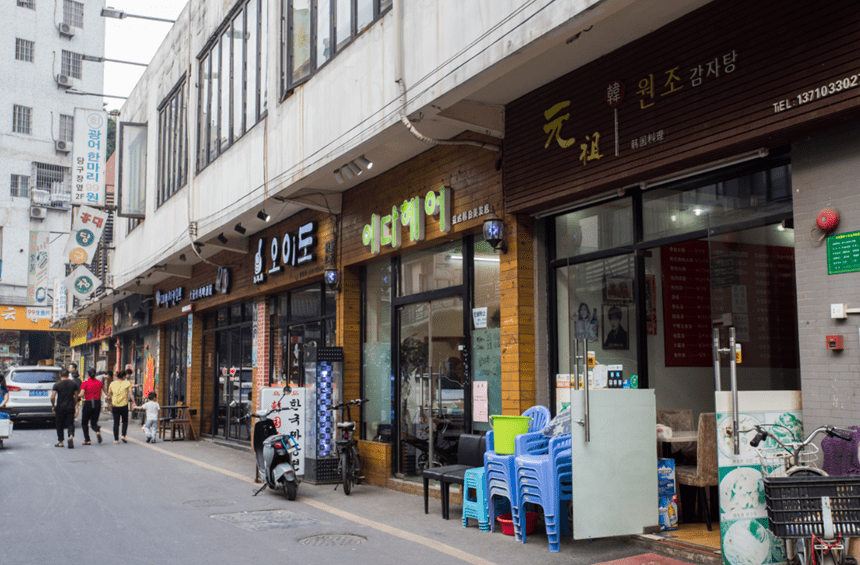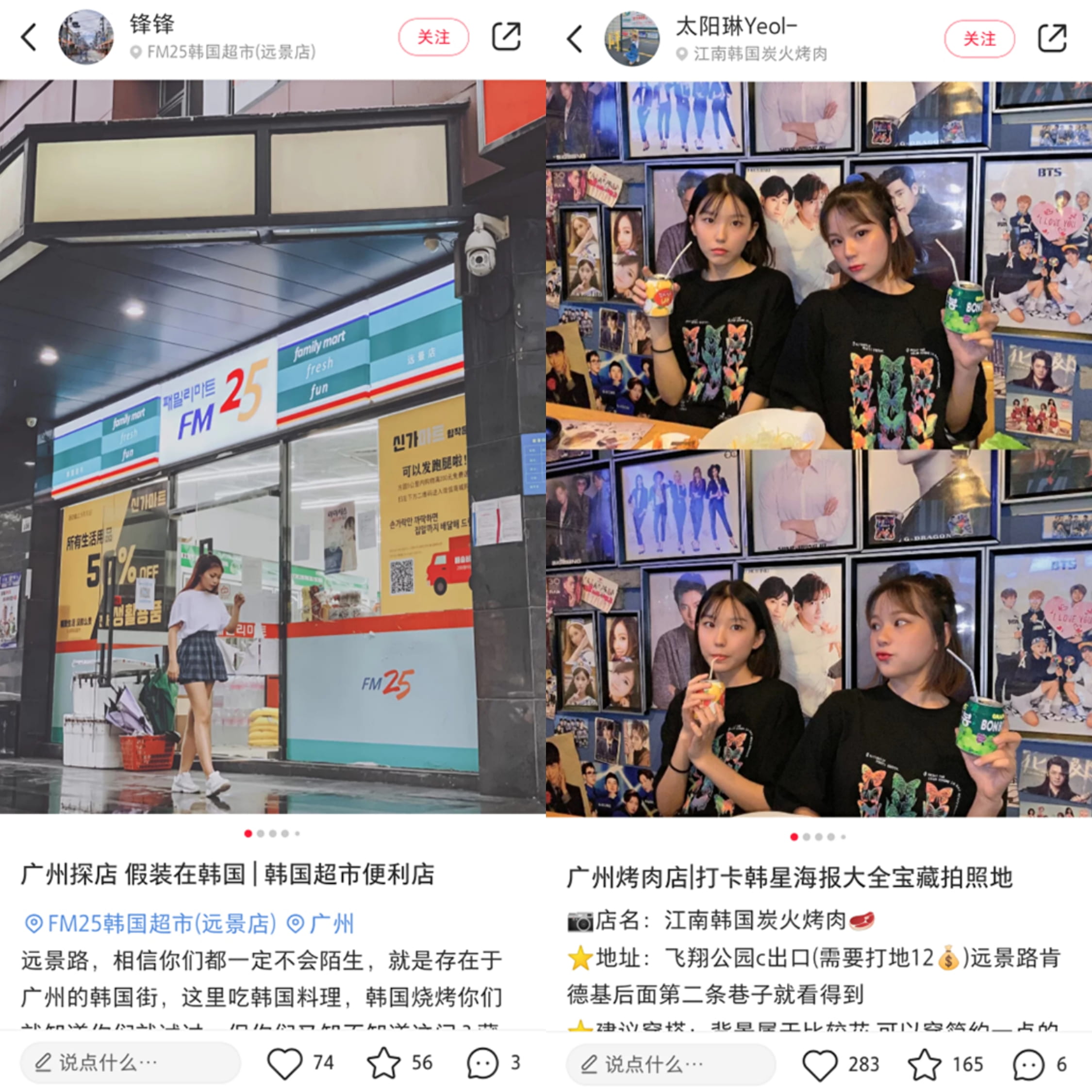When reading Zukin’s chapter Spaces of Everyday Diversity, the first thing came into my mind is Yuanjing Road, a prominent settlement of Korean, in Guangzhou. It largely reflects how immigrants form their ethnic clusters with a structural ecosystem embedded and how these clusters are “dynamic” with the intervention of state and social media.
Guangzhou, located in Pearl River Delta where light manufacturing has been prosperous since the late 1990s, is an ideal city for foreign businessmen to do international trade. Guangzhou and its neighboring cities including Dongguan, Foshan, etc. are well-known for mass producing consumer electronics, apparel, and generally-criticized knockoff leatherwares. In addition, with well-developed water and air transportation, Guangzhou serves as a significant transit hub in business. It is noted that Port of Nansha, which allows more than 16 million TEU shipping containers to be exchanged annually (2019), is the largest port in South China. Foreign merchants who move to Guangzhou either start an individual business or work in a trade company, buy products from both wholesale markets in Guangzhou and factories in its neighboring cities, and distribute them to their home country. In this way, Guangzhou has attracted a considerable number of migrants from what Zukin called “the Global South” and lower-class Korean and brought them fortune especially before the Great Recession of 2008.
Since Tangjing, an area where Yuanjing Road lies, is close to several leatherware and clothing wholesale markets and the train station, many Korean have also begun clustering around it since the late 1990s. Another reason why Tangjing has appealed to the demographic is that there exist lots of urban villages that offer affordable housing and low-price necessities.
Yuanjing Road used to be one of the plain shopping streets that almost exclusively served the Korean migrants and is not remarkable until it comes to the transformation of urban villages led by the local government. Collaborating with property developers, the local government was intended to “build” a distinctive Korean street with typical restaurants and supermarkets that sell Korean imports. Soon it became a “super-diverse” local shopping street in which involves shopkeepers from different backgrounds and local residents in Guangzhou. With the help of social media, it even turned out to be a destination and gradually attracts many tourists from other parts of the country. On Little Red Book, a lifestyle app that Chinese young people often refers to when traveling, Yuanjing Road has been the so-called most instagram-worthy spot for Koreaphiles.

Street View of Yuanjing Road-1

Street View of Yuanjing Road-2

Posts about Store Exploration on Yuanjing Road
However, early Korean newcomers who found cheap accommodation in Yuanjing Road are now forced to move out because of the raising rent. Under these circumstances, I assume that the an increasing number of Korean would relocate to other urban villages near the attraction. Signboards with Korean characters, Korean doll decorations, and shops that claim “Korean authentic style” will certainly not be removed, yet the cuisine in those restaurants may be improved based on the Chinese taste. I am afraid that authentic Korean culture that can evoke empathy or belongingness among the original community would be wiped out and Yuanjing Road may eventually become an artificial Korean shopping street with few Korean migrants visiting. I think it is how gentrification poses a threat to the culture diversity in a city, yet how to preserve it in the development of urbanization is always worth discussing.
Leave a Reply